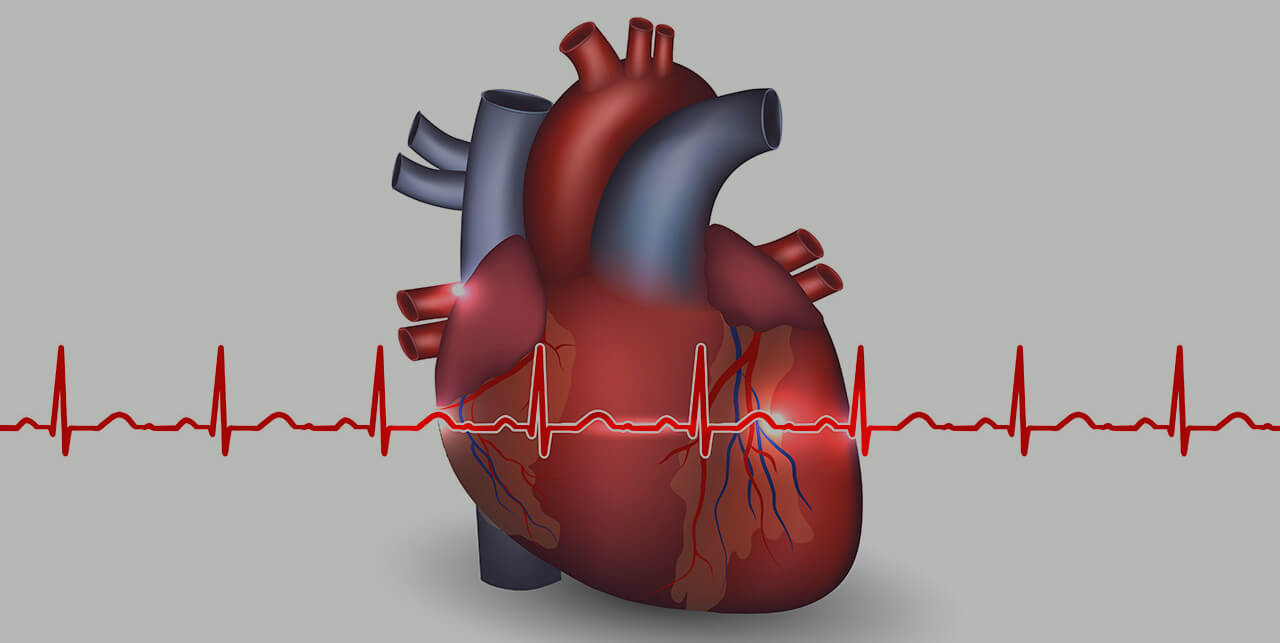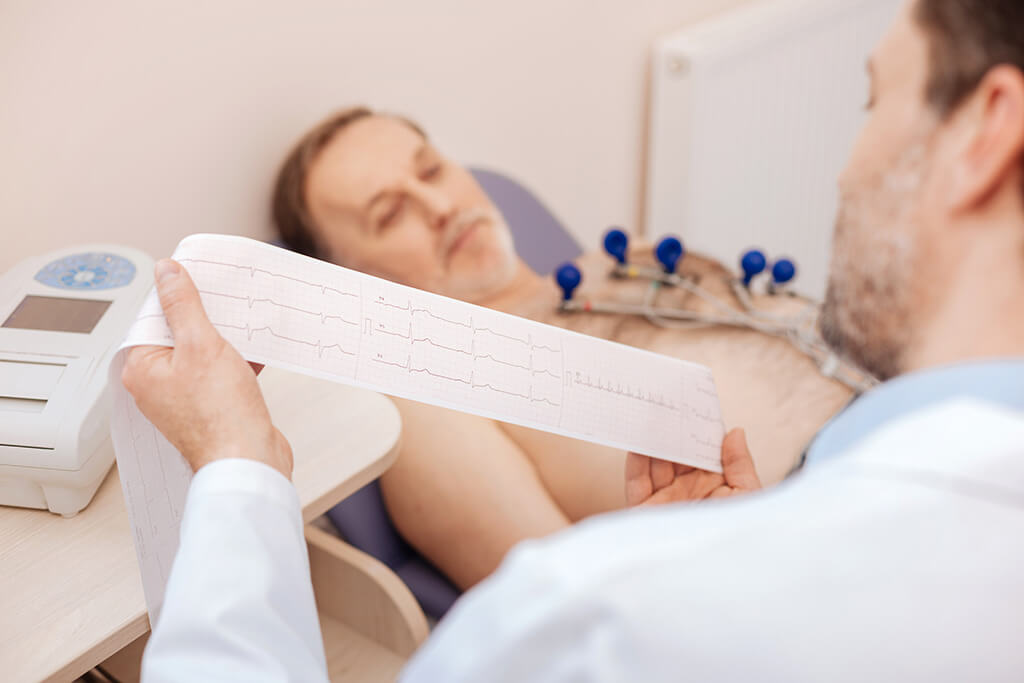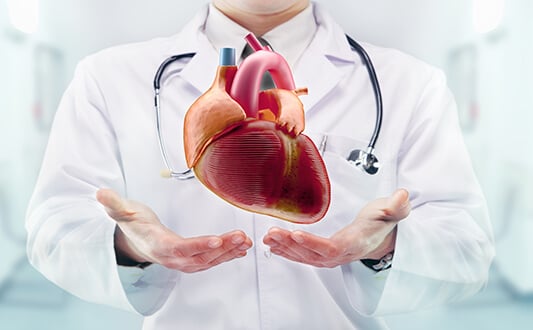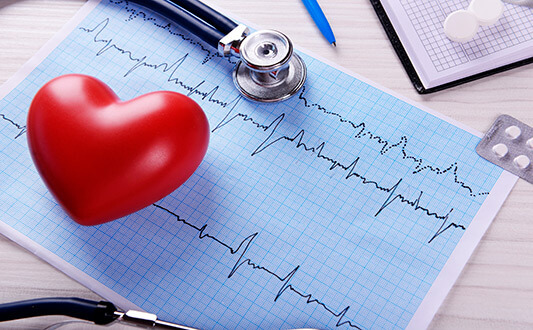IHD (ischemic heart disease) is one of the main reasons causing death among people today. The disease is accompanied by a worsening of the blood supply to the heart, which at any time can result in myocardial infarction. Pathology significantly reduces the quality of human life and reduces its duration by tens of years. Let's find out about how different forms of IHD manifest themselves and how the pathology is diagnosed.
Content
IHD classification
According to the WHO classification of IHD such forms of this disease are identified:
- Sudden cardiac death
- Angina pectoris (cardiac angina)
- Painless ischemic syndrome
- Myocardial infarction
- Postinfarction cardiosclerosis
- Arrhythmic form of IHD
- Heart failure
This WHO classification of IHD is the latest one. It also presupposes the division of each IHD forms according to WHO into several subtypes. Cardiac angina can be stable, unstable, and spontaneous. Myocardial infarction is transmural and small-focal.
IHD classification presupposes the obligatory mentioning the disease variant during its diagnostics.
Let’s have a look at the main IHD types and their definition:
- Arrhythmic form of IHD is the disturbance of oxygenation (oxygen supply) of the myocardium due to the narrowing of the coronary arteries lumen, when arrhythmia becomes the main clinical syndrome.
- Cardiac angina (angina pectoris) - is the arising pain in the chest, which usually occurs after physical exertion, against stress or excitement (with reduced blood access to the muscle layer of the heart or in case of an increase in its oxygen demand).
- Sudden cardiac death – is the most unfavorable IHD type. The corresponding diagnosis is established with an unexpectedly occurred acute coronary syndrome, when a person loses consciousness within 1 hour after the onset of an attack. Usually, the pathology is accompanied by an increase in the heart rate, which turns into ventricular fibrillation. Less often the pulse gradually slows down to a complete stop of cardiac activity.
- Painless ischemic syndrome. The latest WHO classification of IHD presupposes the presence of the “numb” disease form. There will be no any symptoms of the pathology. However, blood flow disruption is detected with the ECG and gradually leads to cardiosclerosis.
- Myocardial infarction is a death of the heart muscle tissue path against the background of a sudden onset of oxygen starvation.
- Postinfarction cardiosclerosis is a result of myocardial infarction. Necrotized heart muscle region is replaced by a connective tissue. That is, a scar forms on the heart. It supports the integrity of the heart body. But the connective tissue does not have contractility. Therefore, often postinfarction cardiosclerosis leads to heart failure.
- Heart failure – is most often a consequence of the death of the heart muscle on the background of oxygen starvation. It is often accompanied by an edema of the lungs.
IHD symptoms
Therefore, we have found out what is IHD. Symptoms of this disease can differ depending on the clinical form of the pathology. That’s why, let’s discuss on of the main ones.
Stable angina pectoris
Angina pectoris is the most peculiar variant of IHD. The pathology exists for a long time period. If we talk about stable cardiac angina, it is normally predictable and leads to progression.
According to the severity of clinical symptoms, the pathology is divided into 3 functional classes.
IHD with angina pectoris has the following symptoms:
- FC 1 (the first functional class) is the occurrence of chest pain only in the case of intense or too fast physical activity. That is, when a person is engaged in heavy physical labor or sports. In this case, pain does not occur with prolonged physical activity of low or medium intensity.
- IHD effort angina FC 2 – a person has a small limited physical capacity. A person still can walk for a long time and do active work. But, the emergence of cardiac pain syndrome during climbing up a rapid rise of stairs, running, emotional stress is possible with IHD effort angina FC 2. Sometimes the pain appears in the cold or after a dense meal.
- IHD effort angina FC 3 - is peculiar with the sharp restriction of physical activity. Even a small effort leads to the pain behind the sternum. IHD effort angina FC 3 makes it possible to walk at a moderate pace over level ground or climb stairs no more than one span. Then the patient has to stop to rest. Otherwise, he feels a pressing pain in his heart.
- Stable IHD FC 4 - any, even a minimum amount of physical activity is accompanied by a pain syndrome. Often walking causes pain in the heart. And sometimes attacks of IHD effort angina arise even while at rest.
Characteristics of pain in IHD:
- Localized in the chest
- An attack lasts from 1 to 15 minutes
- Appears against the background of physical effort or emotional stress
- Eliminated within 2-3 minutes by taking nitroglycerin
- Has a compressive or bursting character
- Irradiates into the left arm
In addition to pain, other symptoms of IHD and angina pectoris are possible. This is shortness of breath, severe fatigue, and pale skin. The patient may experience fear. Often a person can freeze in one place and does not move until the seizure stops.
Unstable angina pectoris
IHD symptoms are quickly progressing in case of unstable angina pectoris. Most often it happens due to one of the two causes:
- Formation of a thrombus within the coronary artery
- The propensity of the vessels to vasoconstriction (spasm), as a result of which their diameter decreases
The main symptoms of IHD in women and men with unstable angina:
- A sharp decrease in the physical effort tolerability
- Worsening of the effect while taking nitroglycerin
- The frequency and duration of attacks of chest pain varies
- Attack can last more than 15 minutes
- The incidence of an attack without previous physical exertion is increased
Distinguishing between such clinical forms of pathology:
- Newly diagnosed - when the above symptoms of IHD in men and women arose within 1 month (the frequency and duration of seizures increased, the effect of nitroglycerin decreased, etc.)
- Progressive-IHD symptoms gradually increase over a long period of time (several months or years)
- Early postinfarction - the emergence of clinical symptoms of IHD in men or women for no more than 14 days after a previous myocardial infarction
- Angina pectoris of rest - occurrence of attacks without physical exertion, their duration exceeds 15-20 minutes, nitroglycerin does not contribute to the elimination of symptoms
Spontaneous angina pectoris
One form of angina pectoris is called spontaneous or variable. It is characterized by the appearance of seizures without any physical or emotional stress. Attacks occur mostly in the morning. Attacks often last more than 15-20 minutes and are not eliminated by taking nitroglycerin. But the symptoms of IHD in women and men are significantly reduced when using calcium blockers. At the peak of the attack, the heart rate may slow down, which is associated with an atrioventricular blockade.
Myocardial infarction
IHD occurs because coronary vessels are clogged by atherosclerotic plaques. At some point, one of them may explode. In this place a thrombus is formed and blocks the blood flow. As a result, the site of the heart, which received blood and oxygen from this vessel, dies.
This is not an IHD complication, but one of its clinical forms. Main IHD syndromes and those of myocardial infarction are:
- Pain syndrome
- Cardiogenic shock
- Heart failure
- Arrhythmic syndrome
- Cerebral syndrome
Pain is the leading symptom of myocardial infarction. It is usually very pronounced, lasts more than 15 minutes and is not removed by nitroglycerin. In most patients, the seizure lasts more than 30 minutes, and in some cases can last several hours. It might not stop even with the introduction of narcotic analgesics.
The main localization of pain is retrosternal. But there is an abdominal form of myocardial infarction, when the patient has a stomach ache. Pathology is often accompanied by flatulence (swelling of the intestine), nausea, vomiting.
Sometimes pain with myocardial infarction is absent. This often happens in diabetes mellitus due to damage to nerve fibers (late diabetic complications). Pain may also be absent in a state of drug or alcohol intoxication.
The most frequent complications of myocardial infarction are:
Cardiogenic shock develops as a result of a sharp decrease in cardiac output. This leads to a decrease in blood pressure. To maintain it or get it back to normal, the fluid enters the blood vessels, the volume of circulating blood increases. In this case, blood accumulates in large quantities in small vessels, which provokes its release into the intercellular space. A consequence of this is the oxygen starvation of all organs and tissues.
Cardiogenic shock manifests itself in three main groups of symptoms:
- Decrease in the "upper" blood pressure by 30 and more mmHg from the initial number or less than 90 mmHg
- Violation of peripheral circulation: a decrease in daily diuresis (volume of urination), pallor or blue skin, cold extremities, inhibition, confusion
- Clinical signs of pulmonary edema
Pulmonary edema can occur with cardiogenic shock or is an independent complication. It is accompanied by a cough without sputum or with the foamy phlegm in pink. There is shortness of breath, noisy breathing. A person cannot lie down and is forced to be in a sitting position, because when lying down in the horizontal position dyspnea is much worse.
Other complications are:
- Arrhythmia- cardiac blockades often occur in myocardial infarction
- Aneurysm of the heart
- Heart rupture (occurs on average a week after myocardial infarction) - external or internal (interventricular septum), detachment of papillary muscles, development of valvular insufficiency
- Dressler's syndrome - inflammation of the pleura, pericardium, lungs, joint damage
- Thromboembolic complications (thrombi can get into the lungs, the brain, lower limbs)
- Gastrointestinal bleeding
Postinfarction cardiosclerosis
Postinfarction cardiosclerosis in IHD occurs in connection with the formation of a scar on the site of necrotic (dead) heart muscle tissue. As can be seen from the name itself, the main cause of postinfarction cardiosclerosis in IHD is myocardial infarction. It is morphologically focal cardiosclerosis. That is, single, sufficiently voluminous, with clearly defined localization scars appear. They usually appear in the region of the apex of the heart and the front wall of the heart.
The main symptoms are:
- Heart rhythm disturbances
- Cardiac blockade (slowing of the heartbeat)
- Signs of heart failure (pain in the heart, swelling, dyspnea)
IHD diagnosis
Let's talk about what is the diagnosis of IHD. It is established on the basis of:
- Patient’s complaints
- Objective symptoms, including those obtained during auscultation (listening)
- Laboratory data (markers of myocardial infarction in the blood)
- Instrumental diagnostics data (ECG, echocardiography)
Diagnosis of IHD starts with the patient’s questions. Main complaints with IHD are:
- Pain behind the sternum, appearing or increasing with the physical activity
- Interruptions in the activity of the heart muscle
- Deterioration of the physical activity tolerability, the inability to engage in manual labor
- Weakness, dizziness
Diagnosis of IHD includes the physical examination and necessary auscultation of the heart with IHD to denote the muffling of tones, an increase in heart rate. Often there is a disturbance of the heart rhythm. With myocardial infarction, the "canter rhythm" (an additional third tone) or noise caused by friction of the pericardium or disruption of the papillary muscle function is often heard.
IHD tests matter only in case of myocardial infarction as they can show its biochemical markers:
- Creatine phosphokinase - reaches a maximum value in the blood within 24 hours after the necrosis of the heart muscle region (the level is normalized after 3 days on average)
- Several types of troponins - cardiac muscle proteins, the level of which reaches a maximum on average one day after myocardial infarction and normalizes after 1-2 weeks (the most sensitive and specific test)
- Transaminases (AST and ALT) - their level increases 12 hours after a heart attack, coming back to normal after an average of 5 days
ECG in IHD has the most important diagnostic value. To establish IHD diagnosis it is enough to receive ECG results and clinical signs of angina pectoris (pain behind the sternum during physical activity). In controversial situations, an ECG according to Halter or with physical exertion is additionally performed. Both methods reveal signs of increasing ischemia on an electrocardiogram. In the first case, the ECG is done for a long time period, waiting for another attack. In the second case, the attack of angina pectoris is caused artificially, by a short-term increase in the level of physical activity.
Echocardiography (ultrasound of the heart) is informative for myocardial infarction. Ultrasound helps to identify complications associated with a disfunction of the heart structure and its contractility. An ultrasound will show the broken interventricular septum or the detached papillary muscle. With the help of an ultrasound, visualization of intra-cardiac thrombi and inflammation of the pericardium is also possible.
Scintigraphy is a modern research method that determines the foci of myocardial necrosis. A radioisotope of technetium is introduced into the patient's body. It selectively accumulates in the tissues, so that the doctor can see the pathological areas within 6-10 days after the infarction.
Coronary angiography is the most informative method of diagnosing IHD. It is always indicated before surgical treatment. The essence of the study is in the fact that a contrast agent is injected into the patient's artery. It "highlights" the lumen of the coronary vessels on the x-ray. As a result, the doctor can determine which arteries are blocked by thrombi or atherosclerotic plaques and how narrow the lumen of the vessels are. Coronary angiography allows doctors to optimally plan the operation and choose the most preferred method of surgical treatment of IHD.
Arrangement of Treatment in Germany
IHD can kill the patient in any moment because this pathology often becomes a reason of the sudden cardiac death. Patient with IHD will suffer the myocardial infarction sooner or later with the natural disease course. But modern medicine allows us to solve this problem and extend the life of the patient for decades. Surgical treatment of IHD in Germany makes it possible to restore normal myocardial perfusion. The patient can again lead an active lifestyle after the surgery. Tolerance to physical exertion will be back to normal, and the risk of acute cardiovascular events will be minimized.
If you suffer from IHD, we offer you an examination and treatment in the best German clinics. We will arrange a trip for you and take care of all the details, starting from the choice of a medical institution and ending with a transfer from the airport. We will contract on your behalf with the administration of the medical center, we will help to collect documents and provide an interpreter.
In addition, the help of specialists from BookingHealth gives you a number of advantages, namely:
- Saving up to 70% of the funds
- Insurance against unplanned medical expenses for up to 200,000 Euros
- Doctor's consultations without additional payment within 3 months after the end of the program
To use the services of our company, fill in an application on the website. We will call you back as soon as possible.
Choose treatment abroad and you will for sure get the best results!
Authors:
The article was edited by medical experts, board certified doctors Dr. Nadezhda Ivanisova, Dr. Sergey Pashchenko. For the treatment of the conditions referred to in the article, you must consult a doctor; the information in the article is not intended for self-medication!
Sources:
National Center for Biotechnology
Read:
Cardiac surgery in Germany – modern treatment of heart disease
Don't know where to start?
Contact Booking Health







